Have you ever seen those beautiful dogs with distinctive merle coats herding sheep on a farm? Or perhaps you’ve watched them dominate the agility course at a dog show? Those are Australian Shepherds – one of America’s most popular and versatile breeds.
But what exactly makes Aussies so popular these days? Is it their intelligence, loyalty, or boundless energy? Are they the right fit for your family? Please grab a cup of coffee and keep reading as we dive into the history and traits of this highly adaptable breed.
You’ll learn why early Aussie settlers relied on these “ghost-eyed” dogs for far more than just herding. Discover how their jack-of-all-trades abilities translated into modern roles like service dog, search and rescue, and more. We’ll also discuss their exercise, grooming, and training requirements – key things to consider before bringing one of these energetic pups home.
Whether you’re an experienced dog owner or new to canines, this guide aims to provide a comprehensive look at Australian Shepherds. Let’s jump in!
Table of Contents
- 1 Australian Shepherd Bite Force
- 2 Are Australian Shepherds Hypoallergenic?
- 3 When Does Australian Shepherd Stop Growing?
- 4 Are Australian Shepherds Born With Tails?
- 5 Can Australian Shepherds Swim?
- 6 Can Australian Shepherds Be Left Alone?
- 7 What Were Australian Shepherds Bred For?
- 8 Can Australian Shepherds Live Outside?
- 9 Can Australian Shepherds Be Guard Dogs?
- 10 Can Australian Shepherds Be Service Dogs?
- 11 Where Are Australian Shepherds From
- 12 Do Australian Shepherds Like Water
- 13 Do Australian Shepherd Webbed Feet
- 14 Do Australian Shepherds Shed A Lot
- 15 Will My Australian Shepherd Calm Down After Being Spayed
- 16 Are Australian Shepherds Easy To Train
- 17 Can Australian Shepherds Be Shaved
- 18 Australian Shepherd Coat Types
- 19 Australian Shepherd Eye Color
- 20 Australian Shepherd Ideal Weight
- 21 Related posts:
- 22 Do Australian Shepherds bark a lot? Understanding your dog.
- 23 12 Rules for a Happy Australian Shepherd Home
- 24 Unveiling the Brown Australian Shepherd: Traits, Care, and Images
- 25 Unveiling the Blue Merle Australian Shepherd: An In-Depth Look
Australian Shepherd Bite Force
The Australian Shepherd has a moderate bite force of around 235 psi (pounds per square inch). This puts them on the lower end of bite strength than other dog breeds.
Aussies were bred for herding, not protection or guard work, so their bite is designed more for nipping/holding than delivering mighty crushing bites. Their moderate bite force is sufficient for controlling livestock but generally not as strong as breeds developed explicitly for protection, like Mastiffs or Kangals.
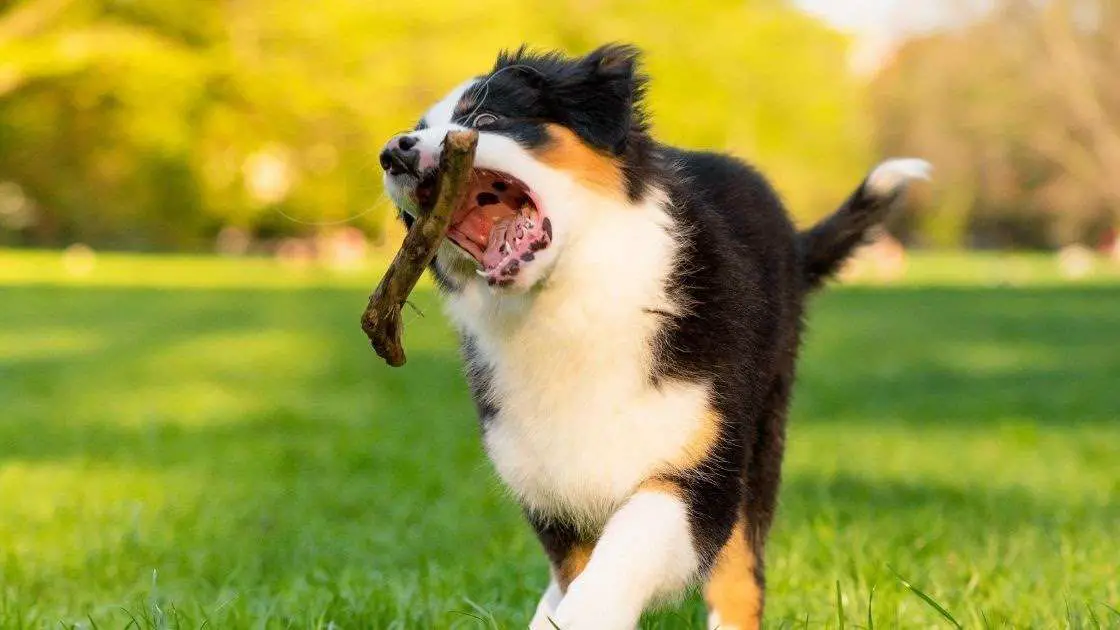
With proper training and socialization, bites should not be a significant concern with Australian Shepherds. Their bite force lands toward the lower end of the spectrum for dogs and is not considered dangerously powerful.
Are Australian Shepherds Hypoallergenic?
No, Australian Shepherds are not hypoallergenic. This breed has a medium-length double coat that sheds a fair amount, so they are not a good choice for people with dog allergies.
Some key reasons Australian Shepherds are not hypoallergenic:
- They have a double coat – an outer coat of medium-length hair and a soft undercoat. This double-layered coat sheds moderately.
- Their coats produce dander, which is what people with dog allergies are often sensitive to. Saliva and urine can also trigger allergies.
- Aussies require frequent brushing and grooming to manage shedding—their long hair traps dander, which can get released into the air.
- While no dogs are 100% non-shedding or hypoallergenic, breeds like Poodles and Schnauzers are better for allergy sufferers.
- There is no such thing as a truly “non-allergenic” dog due to dander, saliva, and urine. But some breeds are worse for allergies than others.
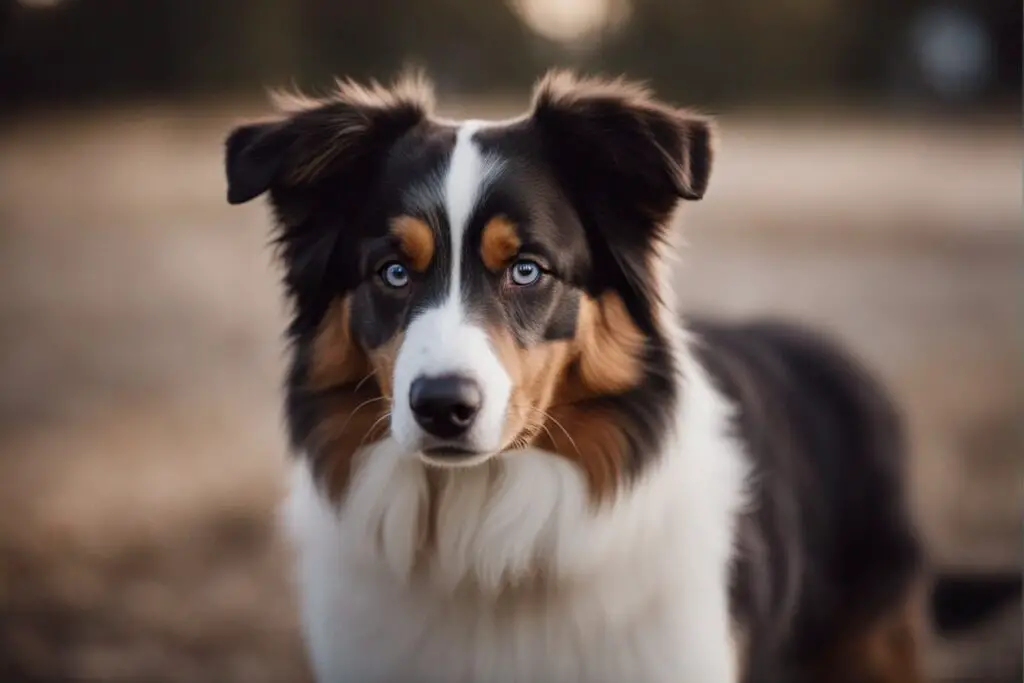
So while Australian Shepherds make excellent pets for many households, their shedding coats mean they are not recommended for people with dog allergies. Going with a short-haired or low-shedding breed would be a better option for allergy sufferers.
When Does Australian Shepherd Stop Growing?
Australian Shepherds typically stop growing and reach their full adult size between 12-18 months. However, this can vary somewhat between individual dogs.
Here’s some more information on the growth timeline for Aussies:
- Birth to 3 Months: Aussie puppies grow rapidly in their first three months, gaining around 5-10 lbs monthly.
- 3 to 6 Months: Growth starts to slow down, but they still gain around 3-5 lbs monthly. Male Aussies are about 50-65% of their adult weight at six months.
- 6 to 12 Months: Slower, steady growth continues. Average growth is around 2 lbs per month. By 12 months, most Aussies are at or near their full adult size.
- 12 to 18 Months: Growth plates close between 12-18 months. Aussies often fill out and add a few final pounds during this time. Their coat also reaches full maturity.
- Full Adult Size: The average Australian Shepherd size is 50-65 lb for males and 40-55 lb for females once fully grown. Males are usually 20-23 inches tall, and females 18-21 inches.
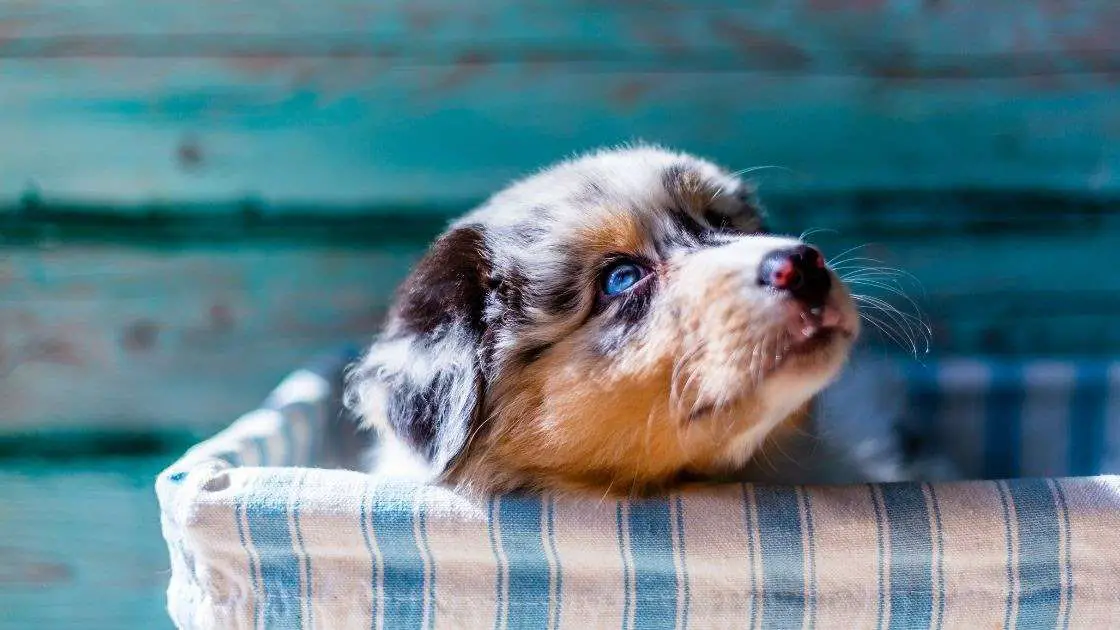
So, in summary, Aussies reach their adult size around 12-18 months, but this varies. Feed a proper diet and avoid over-exercising puppies to ensure healthy development. Consult your vet if you have questions about your dog’s growth.
Are Australian Shepherds Born With Tails?
Yes, Australian Shepherds are naturally born with tails. However, tail docking – amputating puppies’ tails – has historically been very common with this breed.
Key facts about Aussie tails:
- Puppies of this breed are born with a full-length tail, just like other dogs. The natural tail is long, often reaching the hocks.
- Docking (surgically shortening) the tail 2-5 days after birth was standard practice for many generations of Australian Shepherds.
- The reason for tail docking was to prevent injury when working cattle. Shorter tails were thought to be safer.
- However, routine tail docking has become controversial and is now banned in many parts of the world.
- Australian Shepherds born today often have full, undocked tails. Breed standards have been updated to permit this.
- A natural, undocked tail should not be penalized in the show ring today. But some breeders/owners still dock tails based on tradition.
- Aussies are sometimes born with naturally bobbed tails, but this is uncommon. Tails are not normally stubby.
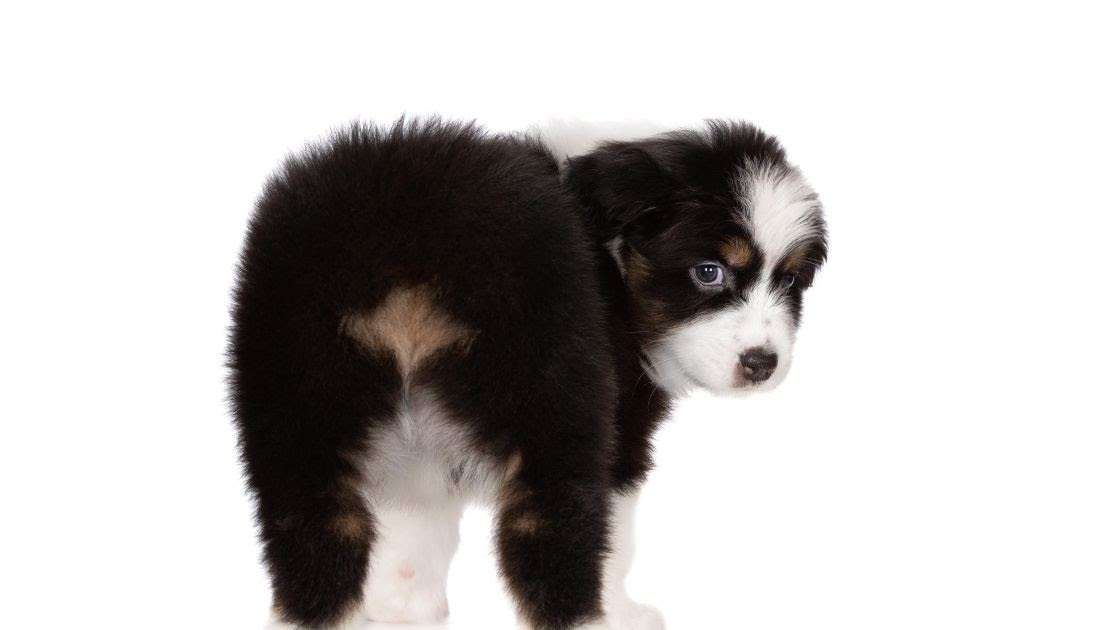
So in their natural state, Australian Shepherds are born with standard-length tails. But due to old traditions, many Aussies had their tails docked historically, and some still do today.
Can Australian Shepherds Swim?
Yes, Australian Shepherds are typically able to swim, though their enjoyment of it can vary by individual dog. Here are some critical points about Aussies and swimming:
- Australian Shepherds have a double coat of fur that provides buoyancy and protection in the water. Their slightly oily outer coat also helps repel water.
- Most Aussies will instinctively know how to paddle and keep themselves afloat, though some may need to gain confidence first. Their herding ancestry means they are highly trainable.
- Proper introduction to water from a young age can help Aussies become strong swimmers. Positive training helps fearful dogs overcome wariness.
- Australian Shepherds have decent endurance that translates well to swimming. But their lean build means they tire more quickly than heavily muscled breeds.
- While Aussies can develop into agile swimmers, they generally are not as obsessed with water retrieval as some retriever breeds. Their focus tends to be cooperative work with their owner.
- Avoid pushing hesitant dogs into swimming. Also, be mindful of the risk of ear infections due to their upright ears collecting water.
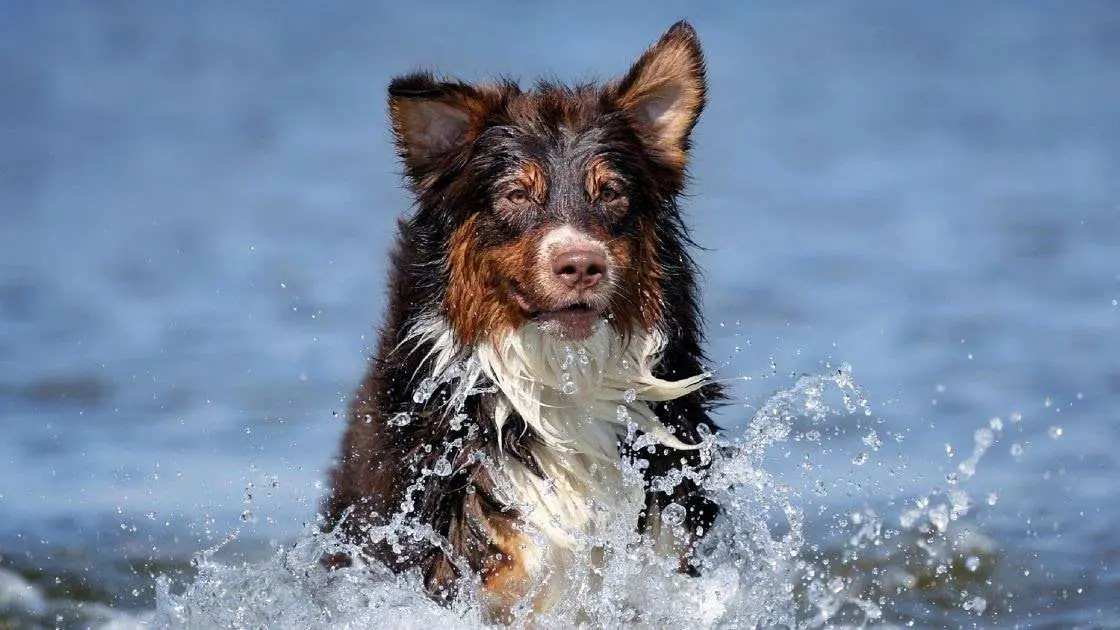
So with proper training, Australian Shepherds can become excellent swimming companions. But introduce water gradually, making it a fun, rewarding experience for your Aussie. Their moderate build suits recreational rather than intensive swimming.
Can Australian Shepherds Be Left Alone?
Australian Shepherds are highly social dogs that bond very closely with their families. They generally do not do well when left alone for long periods. Here are some tips on leaving Aussies alone:
- Australian Shepherds should not be left alone for more than 3-4 hours at most. They can become anxious or destructive if lonely.
- Puppies, adolescent Aussies, and newly adopted dogs may only be able to handle 1-2 hours alone before becoming distressed. Build up time alone slowly.
- Provide plenty of exercise, playtime, and bonding before leaving your Aussie alone. A tired dog is better behaved.
- Give your dog “jobs” like food puzzles and chew toys to keep them occupied in your absence.
- Crate training is vital for creating a safe space for your Aussie alone. Never use crates for punishment.
- Socializing Aussies to accept some alone time from an early age can be helpful. Starting with short separations prevents separation anxiety.
- If your schedule requires long hours away from home, consider providing a companion, dog walker, or doggy daycare.
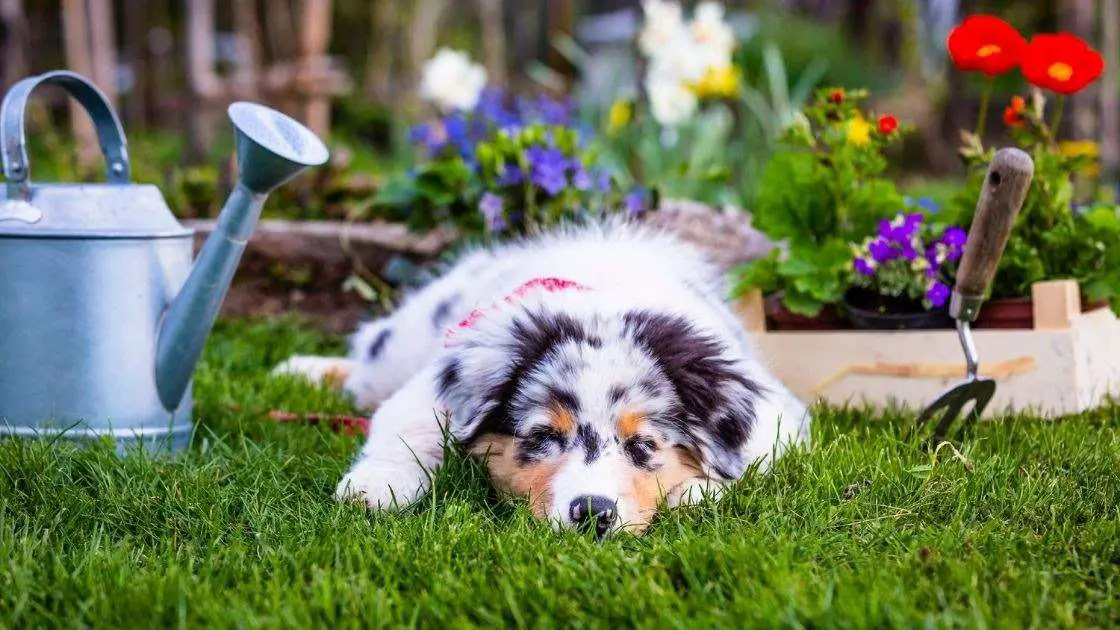
While Aussies adapt better than some breeds, they are not dogs that can be left alone all day. Their intelligence requires stimulation, and they thrive on human interaction. Taking proper steps to prepare and provide companionship is essential if leaving this loyal breed alone.
What Were Australian Shepherds Bred For?
Australian Shepherds were originally bred for herding and ranch work in the American West. Here’s an overview of what Aussies were historically bred to do:
- Herding sheep and cattle – With their intelligence, energy, and nipping style, Aussies excelled at controlling livestock movement on ranches. Their medium size allowed them to be agile.
- General ranch work – Their versatility extended beyond herding to jobs like guarding property, riding on horseback, and being an all-purpose farm dog.
- Working long days – Australian Shepherds have great endurance and can work vigorously for hours in all conditions. Their weather-resistant coat protected them.
- Being highly trainable – Ranchers appreciated how responsive Aussies were to commands and how they retained knowledge. This enabled complex task training.
- Exhibiting loyalty – This breed bonds closely with its owner and aims to work cooperatively. Their devotion to their family made them ideal for ranch life.
- Having high intelligence – The breed’s smarts, initiative, and attentiveness enabled them to learn a variety of ranch jobs. They could problem solve.
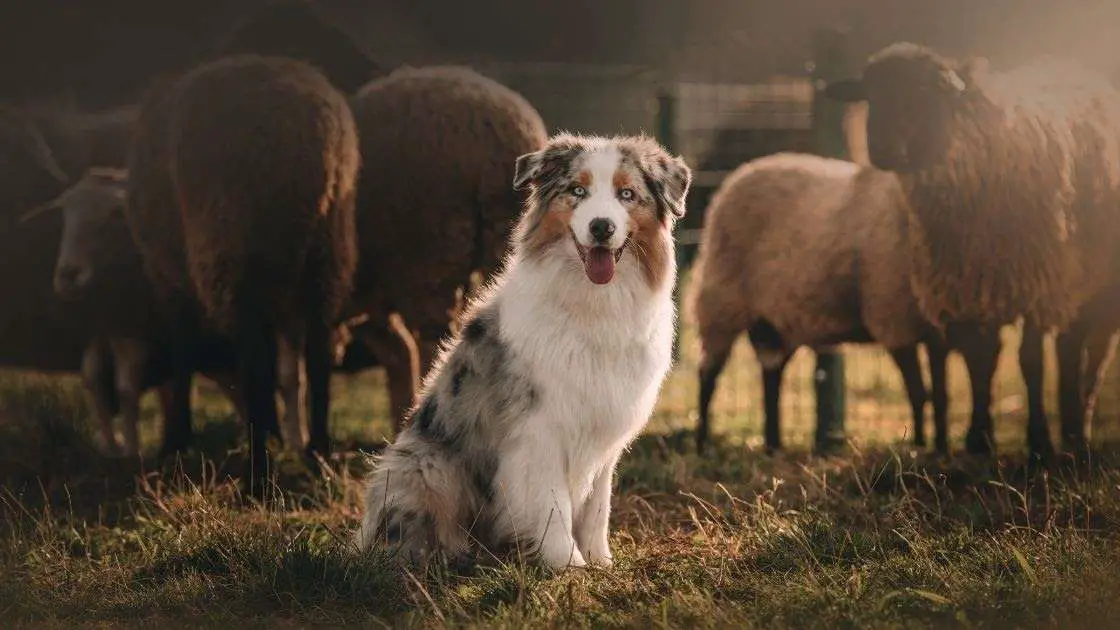
So in summary, Australian Shepherds were multipurpose ranch dogs but especially excelled at sheep and cattle herding with their energy, athleticism, focus, and trainability. These qualities made them a valuable helpmate on American ranches and farms.
Can Australian Shepherds Live Outside?
Australian Shepherds are not well suited to living outside full-time, but they can spend short periods outdoors if adequately cared for. Here are some considerations for Aussies living outside:
- Their double coat does provide insulation against cold and heat. But extremes of temperature should still be avoided.
- Access to shade and fresh water is imperative when outdoors. Aussies can overheat.
- Proper shelter from wind, rain, and snow should be provided. A well-insulated dog house works best.
- Boredom and isolation can be issues if an Aussie is left alone outside for long periods. This is not ideal for such a people-focused breed.
- The coat needs daily brushing to prevent matting when an Aussie lives outside. Their coat can collect burrs and debris.
- Parasites like fleas and ticks need aggressive preventative treatment as outdoor exposure increases.
- Outdoor dogs are at greater risk for injuries, escapes, and accidents like snake bites. Close supervision is required.
- Australian Shepherds thrive most when they can be inside with their family frequently. Outdoor-only living does not provide enough companionship.
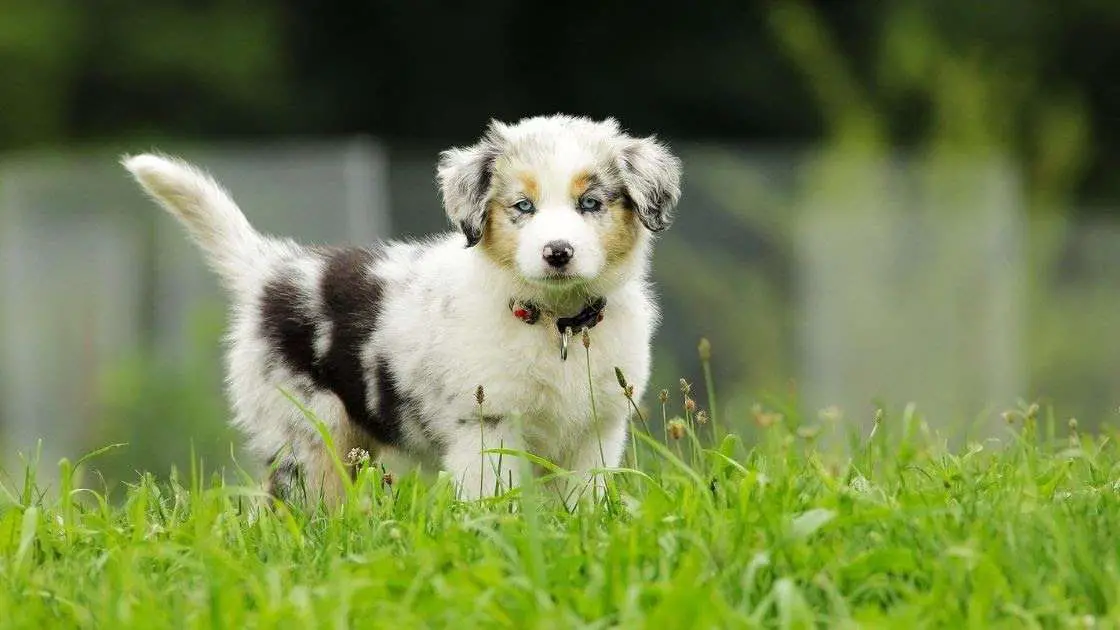
With proper precautions, Australian Shepherds can spend limited time outside. But in general, they fare best as primarily indoor dogs due to their intense bonds with their people. Full-time outdoor living is not recommended.
Can Australian Shepherds Be Guard Dogs?
Australian Shepherds exhibit some behaviors that can make them decent guard dogs, but their temperament is not ideally suited for being solely protection dogs. Here’s an overview:
Positives for guarding:
- Aussies are highly loyal to their families and protective of their territory. They will alert bark when suspicious.
- They are intelligent, observant, and attentive. Aussies notice changes/intrusions that other breeds may not.
- They have high energy and agility to run, chase, and confront potential threats if needed.
- Australian Shepherds have some wariness of strangers and will use barking and nipping to warn them off.
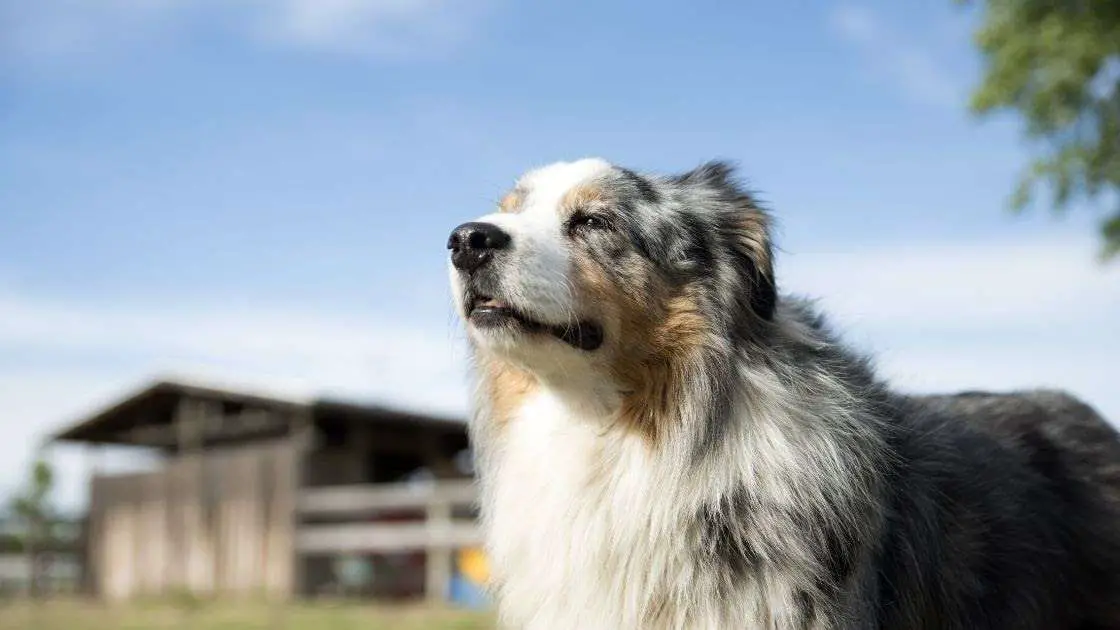
Limitations for guarding:
- Aussies have been bred more for cooperation with humans than aggression. Their first instinct is not to attack.
- Their moderate bite force is weaker than breeds specifically bred for protection, like Rottweilers.
- Australian Shepherds prefer to herd/intimidate through barking and nipping. They are less likely to bite and hold.
- Aussies excel more at sounding alarms than taking down trespassers. They are moderate deterrents.
In summary, well-trained and confident Aussies can provide property monitoring and deterrence. But they are not ideal as primary protection dogs compared to stronger, more aggressive guardian breeds. They are devoted companions that can also serve as watchdogs.
Can Australian Shepherds Be Service Dogs?
Yes, Australian Shepherds can make excellent service dogs. Their intelligence, trainability, loyalty, and moderate size suit them well to many types of service work.
Some of the reasons Australian Shepherds succeed as service dogs:
- They are highly focused on their handler, making them very attentive to commands and their person’s needs.
- Aussies learn new tasks rapidly during service dog training due to their intelligence and eagerness to work.
- They have a strong work ethic. Australian Shepherds enjoy having jobs to do and will happily put in a full day’s work.
- Their moderate size and sturdiness provide stability for mobility and balance tasks.
- Aussies bond closely with their owner, enabling them to provide comfort and companionship to people with PTSD, anxiety, etc.
- They have great stamina to keep up with their owner’s needs and schedule day after day.
- Australian Shepherds are adaptable and can generalize their skills sufficiently to many environments.
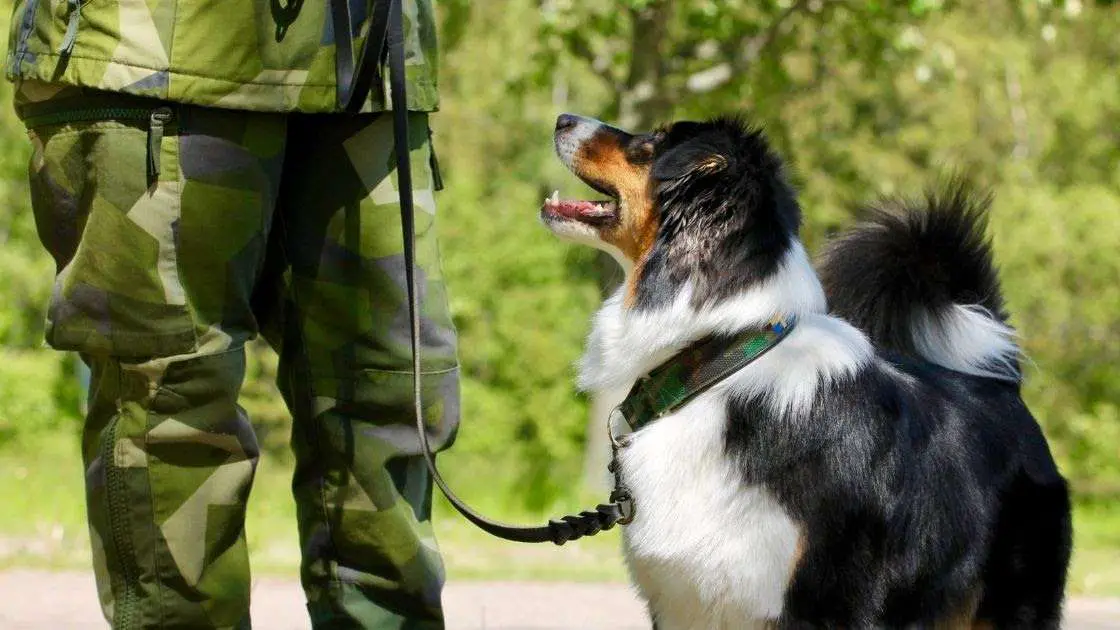
Of course, proper socialization and training are essential for an Aussie service dog. But by nature, they have many attributes that translate effectively to service work for people with disabilities. Their versatility allows them to take on diverse roles.
Where Are Australian Shepherds From
Despite the misleading name, The Australian Shepherd originated in the western United States. They are not from Australia. Here is some background:
- Basque shepherds who immigrated to the United States in the 1800s brought their herding dogs, which became the foundation of the Australian Shepherd.
- These Basque dogs were bred with other herding breeds like Border Collies to create a hardy, intelligent dog well-suited to working livestock in the American West.
- The name “Australian Shepherd” likely came about because of some assumption that the shaggy merle dogs had to be from Australia. But in fact, the breed developed in the U.S.
- These “Aussies” emerged as an identifiable breed in the early 20th century in states like California, Wyoming, Colorado, and New Mexico.
- Despite the name, the Australian Shepherd breed has no ties to Australia. The climate and terrain of the American West shaped the development of this uniquely American herding dog.
- The breed became affiliated with cowboy and ranch life, used by farmers and shepherds. Their popularity later grew beyond just rural regions.
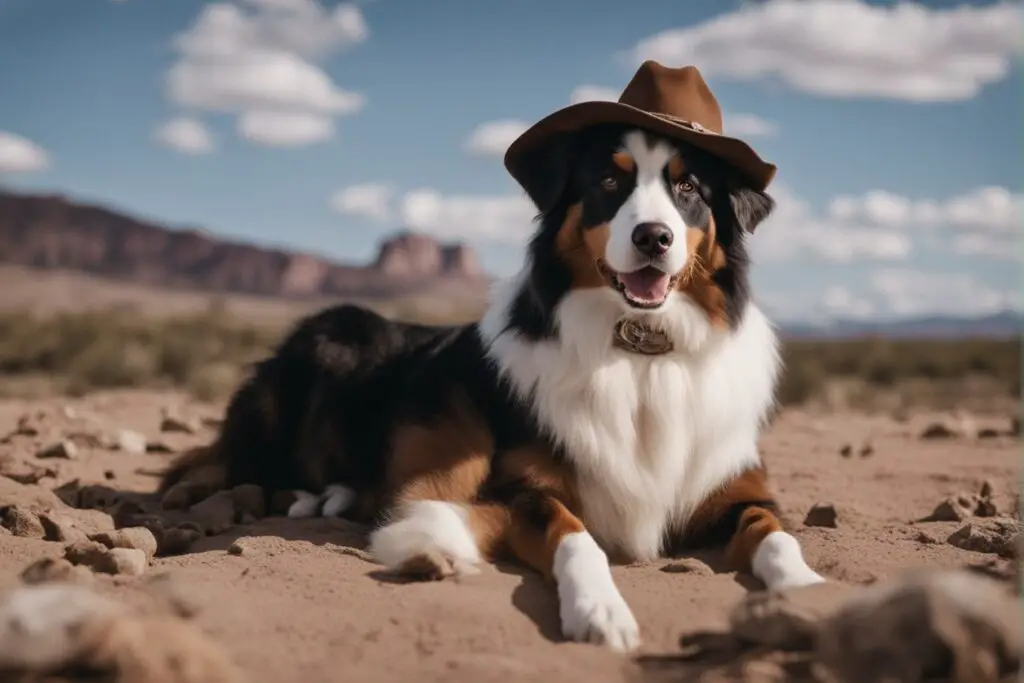
So while often associated with Australia, the adaptable, hard-working Australian Shepherd was explicitly bred to thrive in the harsh conditions of the American frontier. Their success is rooted right here in the western U.S.
Do Australian Shepherds Like Water
Australian Shepherds can have a range of comfort levels with water. Some love to swim and play in the water, while others are more cautious around it. Here are some key points:
- How an individual Aussie is introduced to water as a puppy can impact their enjoyment of it later. Positive, gradual experiences help create confidence.
- Most Australian Shepherds will at least tolerate water and are capable swimmers due to their double coat and moderate build. But their affinity for it can vary.
- Some Aussies become playful, energetic water dogs – they love to fetch sticks or balls from lakes or pools. Their herding heritage makes them highly trainable.
- Other Australian Shepherds may always be more reserved around water. Without encouragement, they may avoid the water and not swim recreationally.
- Proper training and socialization help timid Aussies overcome fear and learn to trust water environments.
- Australian Shepherds tend to be less obsessed with water than some retriever breeds. But with the proper upbringing, many enjoy swimming and water play.
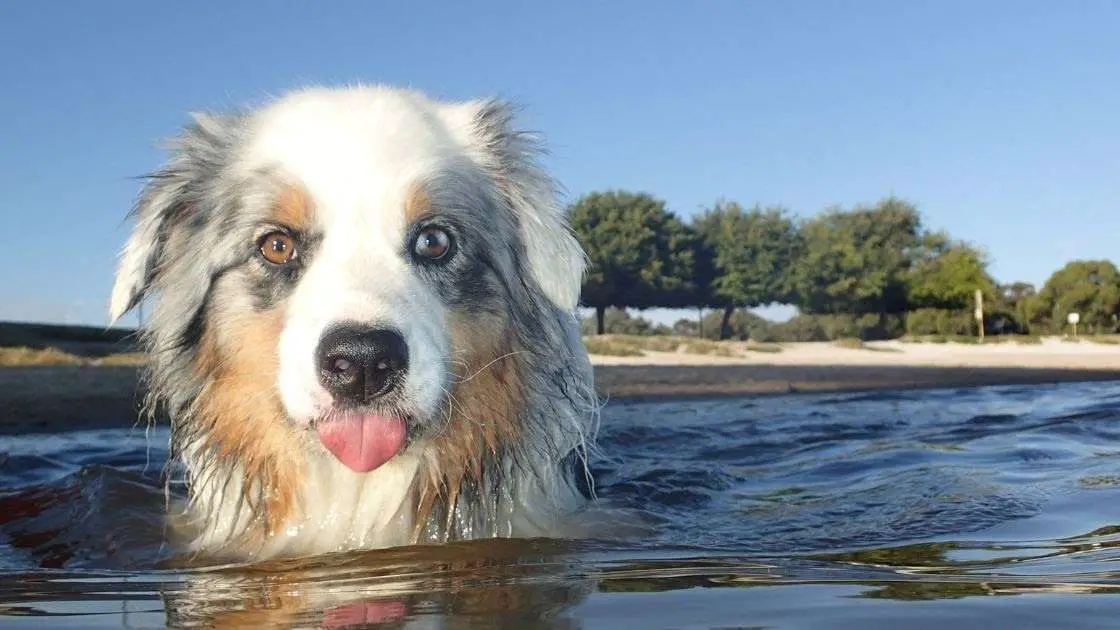
So the breed has no inherent dislike of water. Their interest in swimming, splash play or retrieving from water depends on the individual dog and their early experiences. With training, most Aussies can become confident, capable water dogs.
Do Australian Shepherd Webbed Feet
No, Australian Shepherds do not have webbed feet. Their paws have a standard shape with no webbing between the toes.
Some key facts about Aussie paws:
- Australian Shepherds have compact, oval-shaped feet with well-arched toes. This gives them good agility.
- Their paws are slightly larger in proportion to their body size than some other herding breeds like Border Collies.
- The paw pads are thick and rugged to allow running over rough terrain. Between the pads is just regular skin, not webbing.
- While Aussies can swim decently if introduced to water properly, they were not explicitly bred for water retrieval. Thus they lack the webbed feet that would aid that.
- Their front paws may turn out slightly, associated with herding breeds. But the feet are not splayed.
- Dewclaws are sometimes removed on the hind legs but are generally present on the front paws.
- Proper foot care, like trimming nails, helps maintain good paw health for working Aussies.
So overall, the Australian Shepherd has sturdy, compact feet without webbing, allowing them to be quick and agile herding dogs. Their feet suit them well to ranch work rather than aquatic pursuits. Good paw care keeps them active.
Do Australian Shepherds Shed A Lot
Yes, Australian Shepherds shed a fair amount year-round. This is due to their double-layer coat. Shedding is most significant during seasonal coat blows.
Here are some key facts about Aussie shedding:
- Australian Shepherds have a thick undercoat that “blows” their hair once or twice yearly as seasons change. This shedding can be heavy.
- Their outer coat also continually sheds and renews itself. Aussies need regular brushing to keep loose hairs under control.
- Without frequent brushing, Australian Shepherds can shed all over furniture, cars, clothing, etc. Their long hair becomes embedded in fabrics.
- Specific colors and coat types like “fluffies” may shed more than others. But all Aussies will shed moderately to heavily.
- Vacuuming and washing dog bedding regularly is essential in a home with an Aussie. Their hair gathers in fabric.
- While no dog is entirely non-shedding, Australian Shepherds are not a low-shed breed. Their coats require significant grooming.
- Tips like adding omega fatty acids can help minimize shedding. But heavy seasonal sheds should be expected.
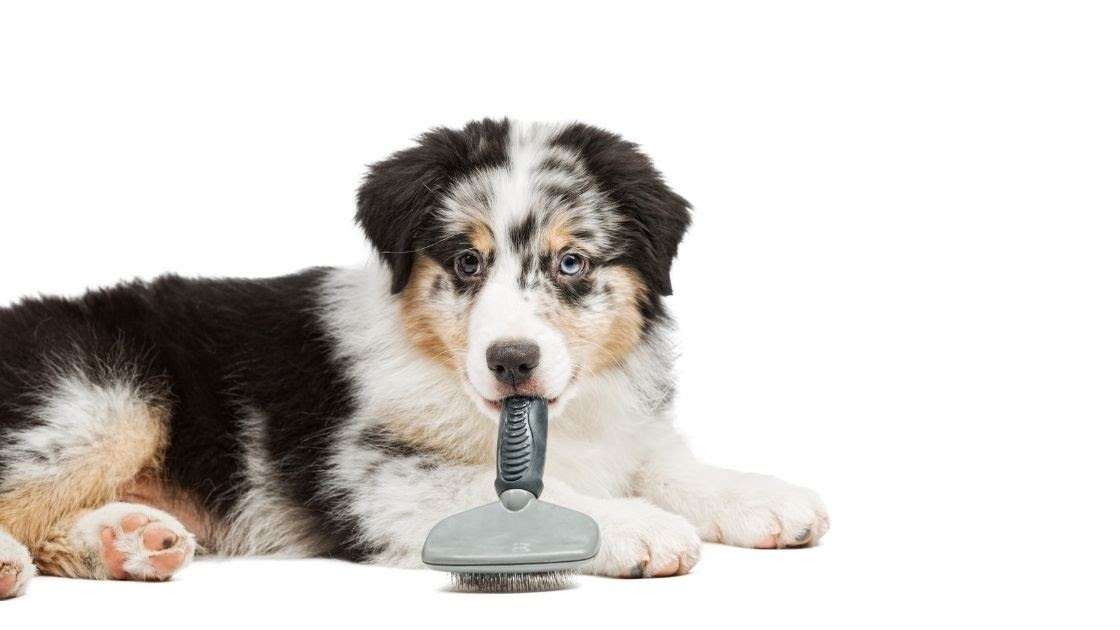
So people wanting a lower shedding dog should look to breeds like Poodles rather than moderate-to-heavy shedders like the Australian Shepherd. Their beautiful coats require regular upkeep.
Will My Australian Shepherd Calm Down After Being Spayed
Spaying or neutering an Australian Shepherd can help calm some hyperactivity and temperament issues, but the impact varies for each dog. Here’s what to know:
- Spaying/neutering can reduce roaming, mounting, and other sex hormone-influenced behaviors in Aussies. This may make them calmer generally.
- However, the energy level and temperament an Aussie is born with is also a significant factor separate from hormones. Some adult Aussies remain high energy after spay/neuter.
- Proper exercise, training, and outlets for their intelligence are still essential to manage energy in an Aussie, fixed or not.
- Spaying too young (under 5-6 months) may increase anxiousness and reactivity. Vets recommend waiting until maturity.
- While fixing your Aussie may mellow certain behaviors, their core personality is unlikely to change completely. They are not likely to become couch potatoes.
- Continue obedience training and activity even after spaying/neutering. Meeting their needs is key regardless of intact status.
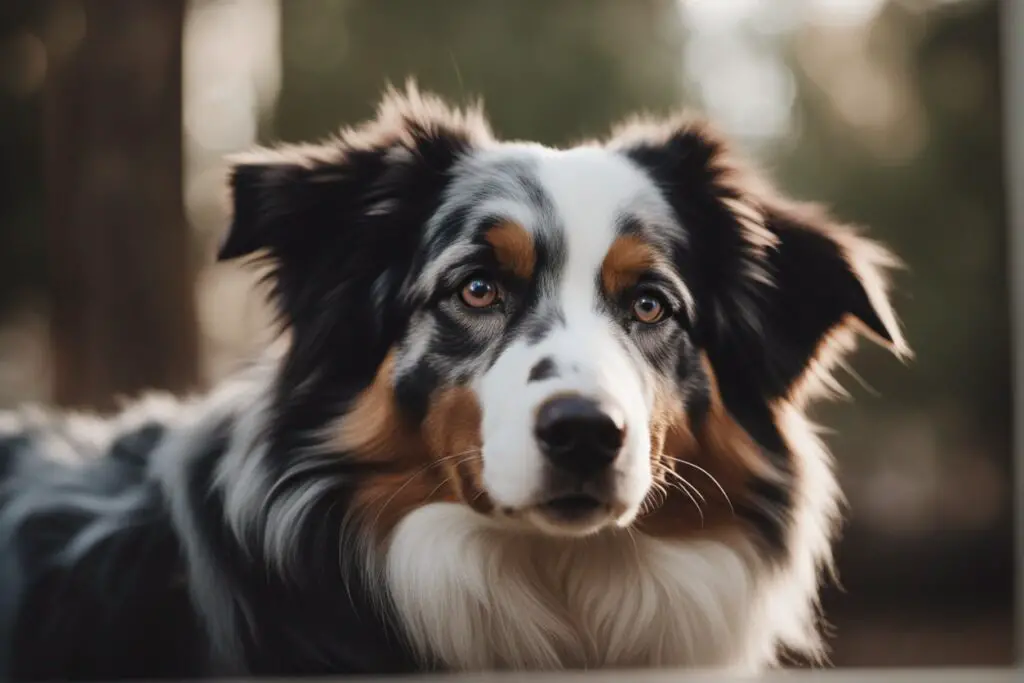
So spaying/neutering can help curb sex-linked behaviors and may mellow some dogs. But to manage an Aussie’s energy, you still need to provide proper training, exercise, and stimulation. Don’t expect a total temperament change. Work with your vet on ideal timing.
Are Australian Shepherds Easy To Train
Yes, Australian Shepherds are typically very easy to train. There are several reasons why Aussies excel at training:
- High intelligence – Australian Shepherds are intelligent, attentive dogs who quickly grasp new concepts.
- Eagerness to work – The Aussie breed is oriented towards having jobs and tasks. They enjoy mental stimulation.
- Aiming to please – Aussies bond closely with their owner and desire to work cooperatively. They are motivated by praise.
- Active minds – Their energetic nature translates into enthusiasm for training games and challenges.
- Versatility – Australian Shepherds can succeed at many types of training, from agility to obedience to tricks.
- Retention – Once Aussie learns a new behavior, they tend to retain it well, with less repetitive training needed over time.
- Food motivation – Australian Shepherds respond readily to food rewards, which makes training progress faster.
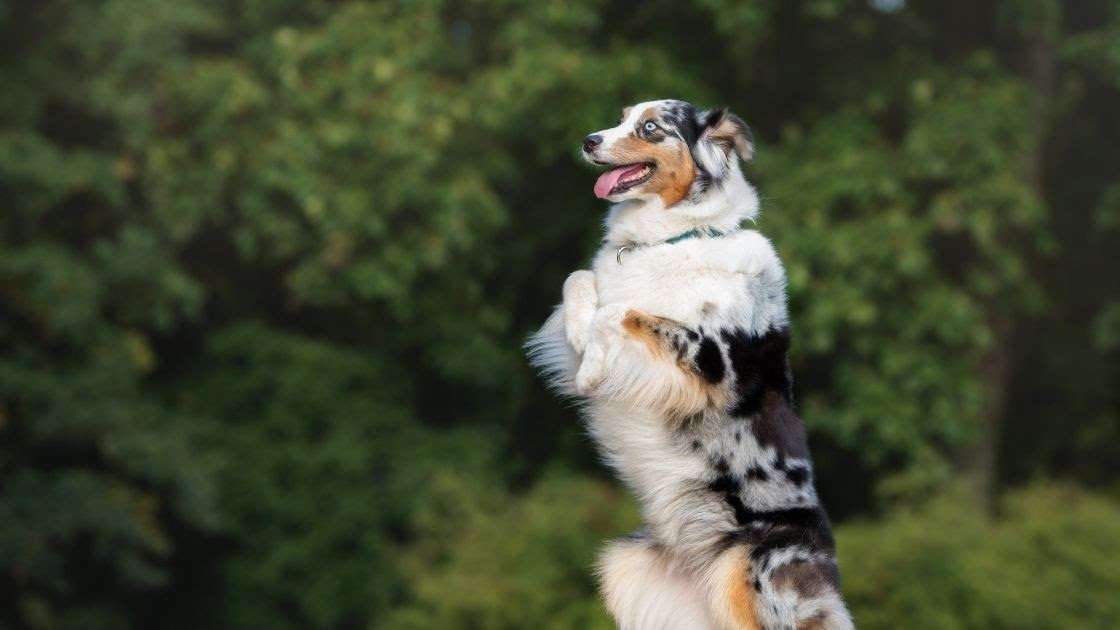
Of course, all dogs need patient, positive training tailored to their personality. But Australian Shepherds tend to be one of the easiest breeds to train due to their high working drive and eagerness to bond with their owner. They are a very trainable canine partner.
Can Australian Shepherds Be Shaved
It’s not recommended to fully shave down an Australian Shepherd’s coat except in certain medical situations. Here’s some guidance on shaving Aussies:
- Shaving can damage the structure of an Australian Shepherd’s double coat. The thick undercoat and guard hairs may not grow back correctly.
- Aussies’ coats help insulate them from heat and cold. Removing this protection can lead to temperature regulation issues.
- The coat should only be shaved if severely matted or for surgery. Never shave just for looks or perceived cooling.
- Trimming around the paws, sanitary areas, and ears is okay. But do not take the coat extremely short overall.
- Regular brushing when the coat blows helps remove loose hair without damaging coat health. Deshedding tools can also help.
- Bathing and blow drying before brushing can help remove excess coats without shaving down to the skin.
- If an Aussie is shaved, supplements and proper nutrition support the re-growth of a healthy coat. But shaving should be a last resort.
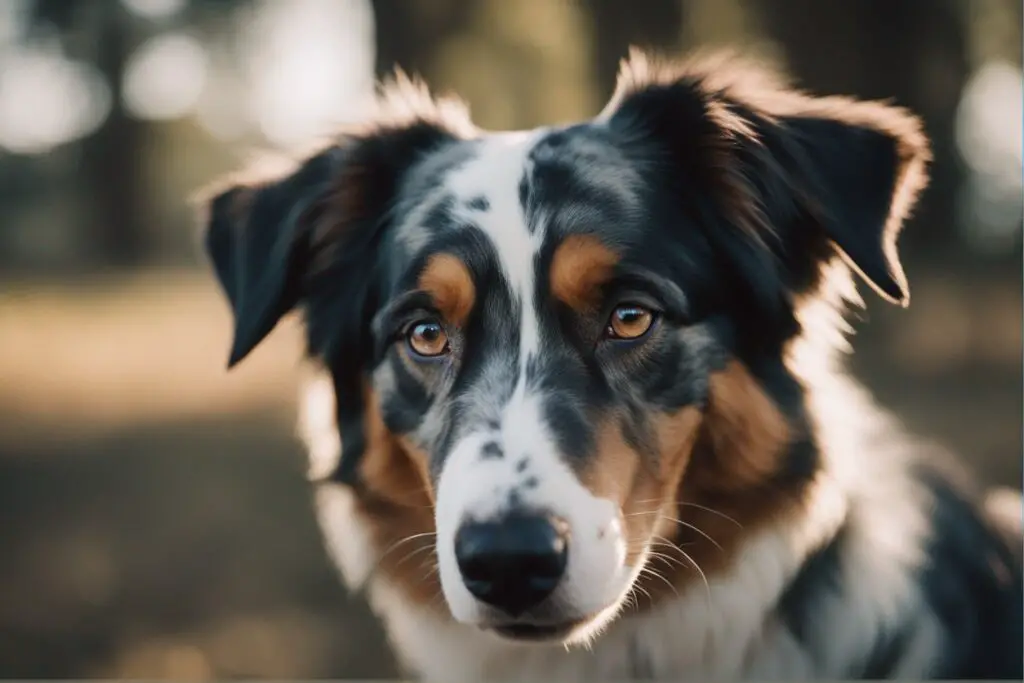
So shaving an Australian Shepherd without a medical reason is not recommended. It risks damaging the coat and exposing the dog’s skin. Proper grooming prevents the need for excessive shaving in this breed.
Australian Shepherd Coat Types
Australian Shepherds come in a variety of coat colors. The most common are:
- Black – Solid black coat. It can have white markings on the face, chest, and feet.
- Red – Varying shades of solid reddish-brown fur. Again, it may have some white.
- Blue Merle – Marbling effect of gray, black, and white throughout the coat. No copper points.
- Red Merle – Marbling of reddish-brown, white, and copper.
- Red Tri-color – Black, white, and copper red coloring in a tricolor pattern.
- Blue Tri-color – Black, white, and copper red in a tricolor pattern.
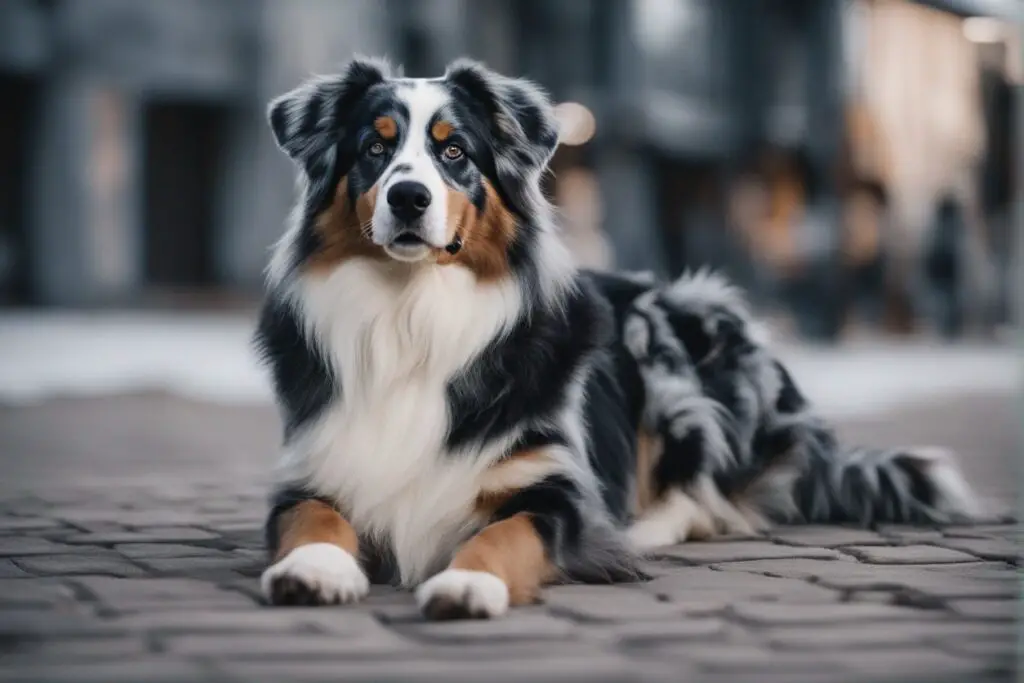
Rarer colors include:
- White – White coats are uncommon in Aussies. Often have eye defects.
- Liver Red – A darker, chocolate shade of red fur.
- Liver Merle – Marbling effect in shades of liver brown, taupe, and white.
The merling gene produces a highly varied appearance in Aussies. No two Merle coats are precisely alike. Responsible breeders aim for vivid rich colors with no excessive white.
Australian Shepherd Eye Color
Australian Shepherds can have a variety of different eye colors. Here are some of the most common:
- Brown – Shades range from light golden brown to deep chocolate brown. Brown is the most typical eye color seen in Aussies.
- Amber – Ranging from light yellow to richer orange-toned amber. Sometimes referred to as “ghost eyes.”
- Blue – Grayish-blue eye color. Often seen in merle-patterned Australian Shepherds.
- Hazel – Mix of green, brown, and golden. Aussies don’t typically have solid green eyes.
- Marbled – Multiple colors mixed in one eye due to the merle genes. It can be brown/amber/blue mixes.
- Heterochromia – Two different colored eyes, one brown and one blue. Associated with the merle coloring.
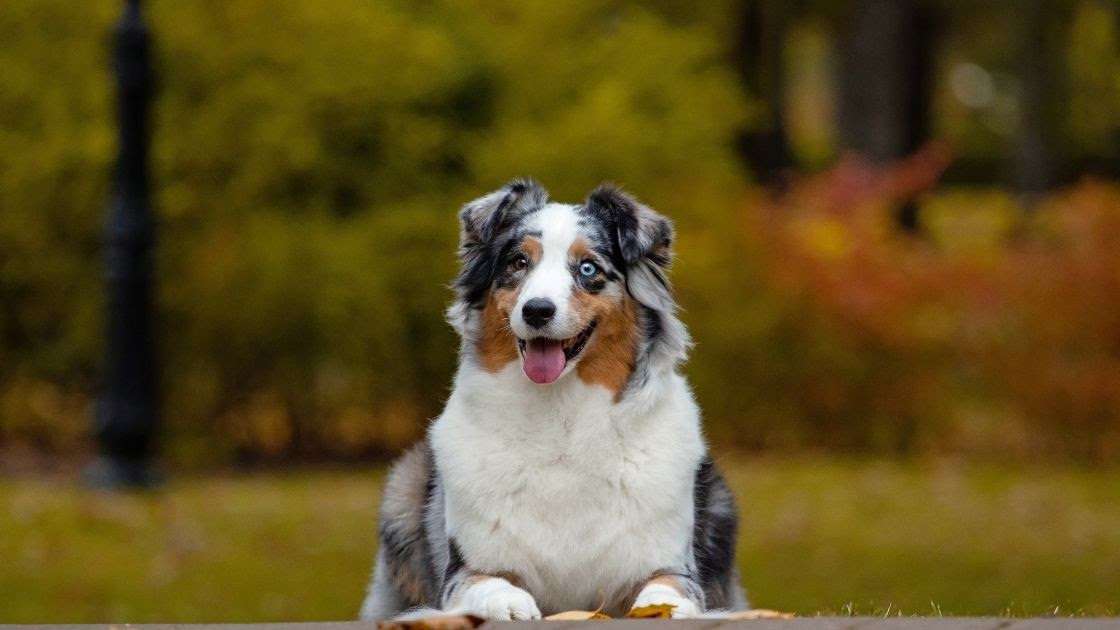
Some notes:
- Eye color can change gradually as an Aussie matures. Puppies may start with lighter eyes.
- Responsible breeders aim to produce puppies with rich, vibrant eye colors and no vision issues.
- No one eye color is better. Eye defects like colobomas are more important than simple color.
So Australian Shepherds can display a wide variety of eye shades and patterns. Color is not as crucial as eye health and vision quality for this active breed.
Australian Shepherd Ideal Weight
The ideal weight for an Australian Shepherd depends on the sex, height, and overall build of the individual dog. However, the average healthy weight range is:
- Male Aussies: 50-65 lbs (23-29 kg)
- Female Aussies: 40-55 lbs (18-25 kg)
To determine if your Australian Shepherd is at a healthy weight:
- You can feel but not see the ribs without excess fat covering.
- The waist is discernible when viewed from above.
- Abdomen tucked up when viewed from the side
- No sagging stomach
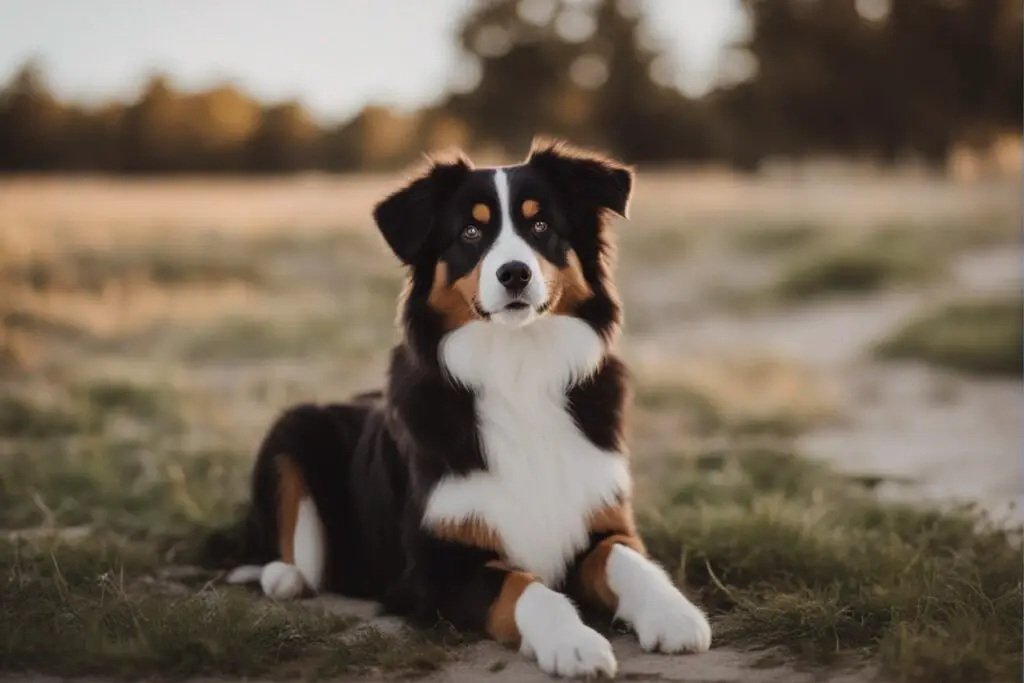
Puppies should be kept lean to support proper bone growth. Adult Aussie weights are achieved between 12-18 months old.
Factors like neutering, diet, and exercise play a role in weight management. Aussies were bred to be moderate-sized, agile working dogs – being overweight inhibits their abilities.
Please consult your veterinarian to establish an optimal weight target for your Australian Shepherd based on their build, lifestyle, and health needs. Proper nutrition and activity help maintain fitness.
The Australian Shepherd is surely one of the most beloved and versatile dog breeds. As we’ve explored through these common questions, Aussies are intelligent, energetic companions that thrive when given a job to do.
Originally bred as agile ranch hands, these dogs excel today in arenas from dog sports to service work and more. An Australian Shepherd can be an active family dog – if provided proper training, socialization, and outlets for their high working drive.
From their distinct merle coats to their focused temperament, Australian Shepherds stand out as quintessential American herding dogs. They continue to rise in popularity due to their trainability, loyalty, and eagerness to bond with their owner. Any experienced or dedicated dog lover is likely to find a perfect, furry partner in an Aussie.